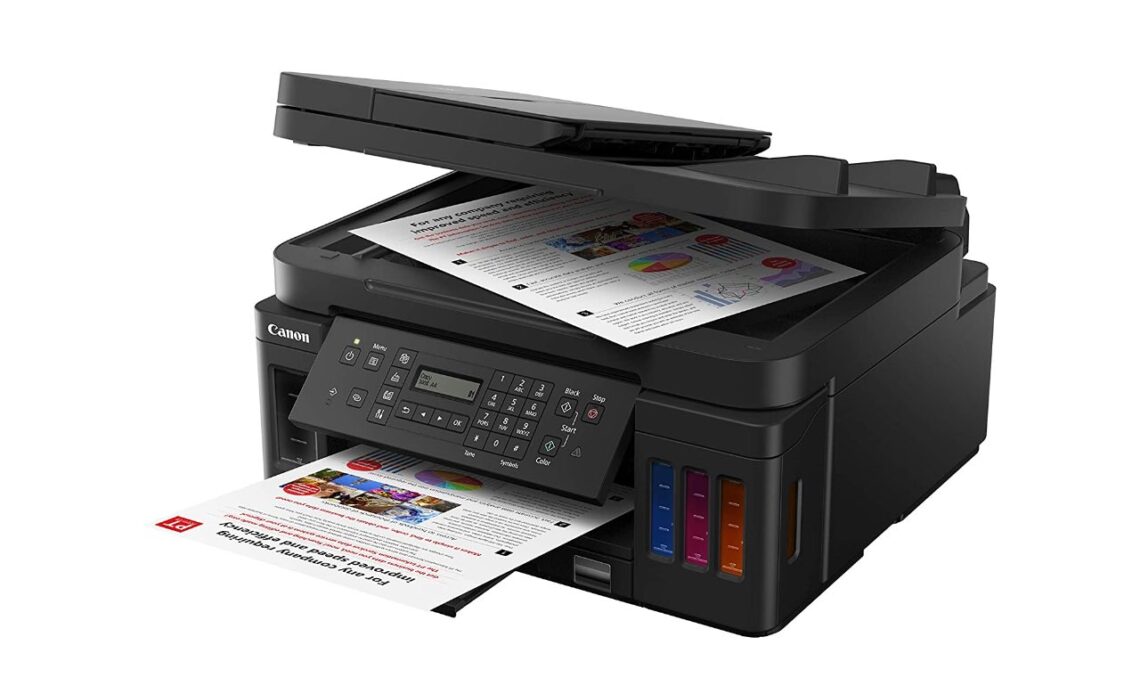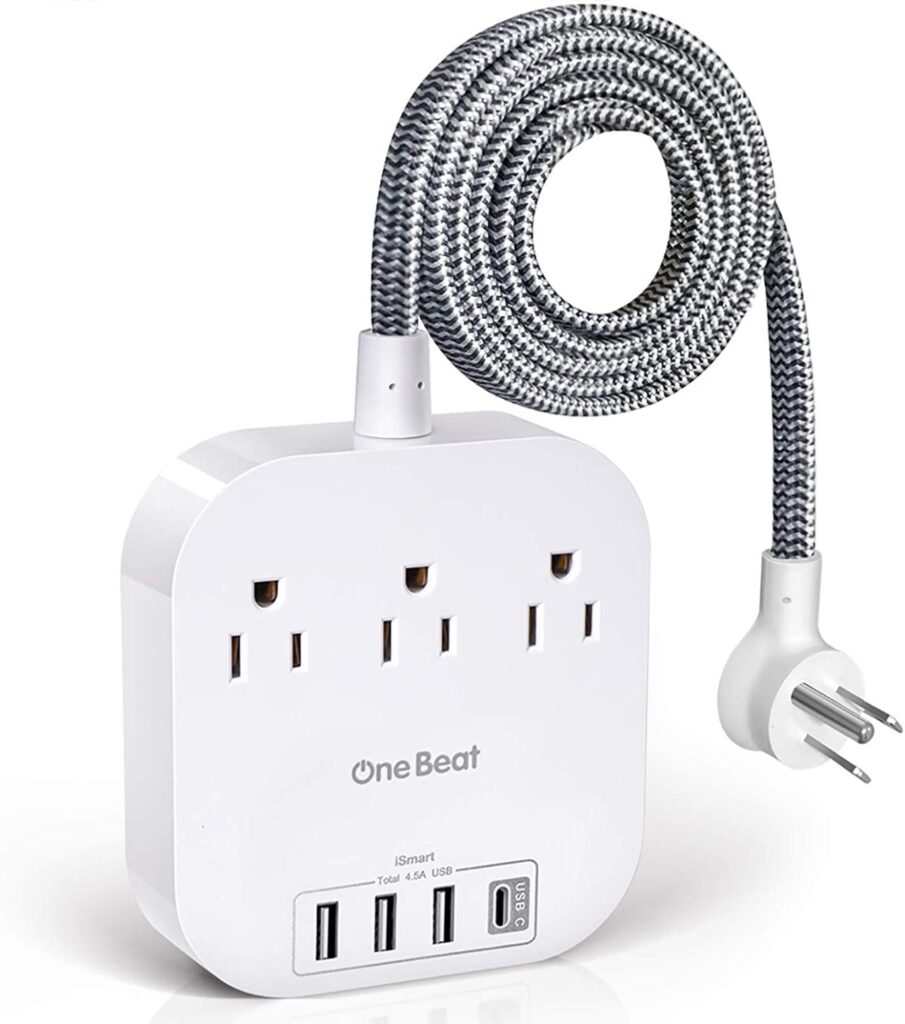
Above: Canon’s G7020 Megatank Printer
BitDepth#1290 for February 25, 2021
It’s the little things that drive you mad while working from home.
Pencil sharpeners that get dull or worse, get lost. Extension cords that are too short. The unruly nest of cables, everywhere.
Honestly, it’s like stepping on a nest of ants.
Get velcro strips to tidy your cables and you soon discover that the tiny hooks are a magnet for dust bunnies. Try to clean them with a damp cloth and watch their grabby bits yank tufts of thread out of the cloth itself.
The quixotic journey to home office bliss involves a lot of charging at windmills with head-rattling collisions.
Since March 2020, the search for solutions has ramped up worldwide and I can report on two tested, unequivocal successes.
Extension cables with USB ports.
Yes! Like chocolate ice-cream dipped in chocolate flakes and then in chocolate syrup, this is a synergy that seems so obvious you’re left to wonder why it isn’t universal.
Instead of dragging an extension cord into a more comfortable space and then plugging an adapter into it to charge your device, you just plug the device in directly. Power ports are available for non-USB items, like lamps, popcorn makers, coffee pots or whatever else makes your WFH space worth inhabiting.
An underpowered USB charging hub on an extension cable will simply shut down other ports when delivering a strong power draw.
But there are potential pitfalls.
All USB charging ports aren’t created equal, and some are dramatically less equal than others. An underpowered USB charging hub on an extension cable will simply shut down other ports when delivering a strong power draw.
Many modern devices require high-energy output and won’t be charged by standard USB power ports.
Most modern devices prefer ports with PowerIQ (iQ), a fast-charging technology that identifies the device it’s attached to and delivers the required power.
New high-energy devices powered by USB-C ports often require Power Delivery (PD) connections to charge at all. Usually rated between 30w and 100w, you will need a port connection that matches the power demand of the device you intend to plug in.
Most laptops and high-end tablets call for 60w and up, and you won’t find that on an extension cable, but several extension cables offer PD connections of between 30w and 45w.
These connections are always USB-C at both ends, so invest in a quality cable rated for the charge power you need.

Ink tank printers.
From the day they were introduced, inkjet printers were a scam. The printer was priced cheaply to lock the user into buying expensive cartridges for the life of the device.
People rebelled. Right from the start, the cartridges were refilled, first using home brewed ink with medical syringes, then an industry of refill kits rose up to serve that need.
Printer manufacturers then embarked on a two decades of cat and mouse chases with their users, embedding chips into the cartridges, which were matched by “remanufactured” cartridges and then cartridges that were designed to resist refilling.
Inkjet owners began to notice that they were being punished for trying to get better value for their money.
With the collapse of both my high-end Epson photo printer and a cheap HP unit I used for class projects, I was in position to discover the first good idea in inkjet printers in years.
Epson (EcoTank), HP (SmartTank) and Canon (MegaTank) each have a line of ink tank printers, devices with print heads connected to hefty reservoirs that are refilled by bottles of cheap ink. Essentially what customers had been asking for since the first inkjet printer hit the market.
I chose the Canon G7020, a multi-function device (copier, printer, scanner) for its mix of features. Like most multi-function printers, it does scans, prints and copies functionally well, but only just.
The colour photo prints are average at best and image scans are borderline, but in just short of a year of regular use, the ink tanks are down by just 20 per cent.
Replacement ink bottles – just a bit smaller than a Chubby drink – are US$12. You pay more for the printer upfront but if you’ve been changing ink cartridges in less than a month or two, an ink tank printer will soon pay off.
For a home office that doesn’t need high-end scanning or printing, these devices are a no-brainer bargain.
It isn’t clear whether they will catch on. None of the big names are pushing this idea with enthusiasm and most customers aren’t aware that they exist.
Now you do.


